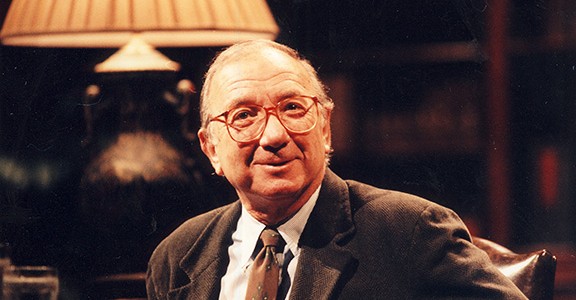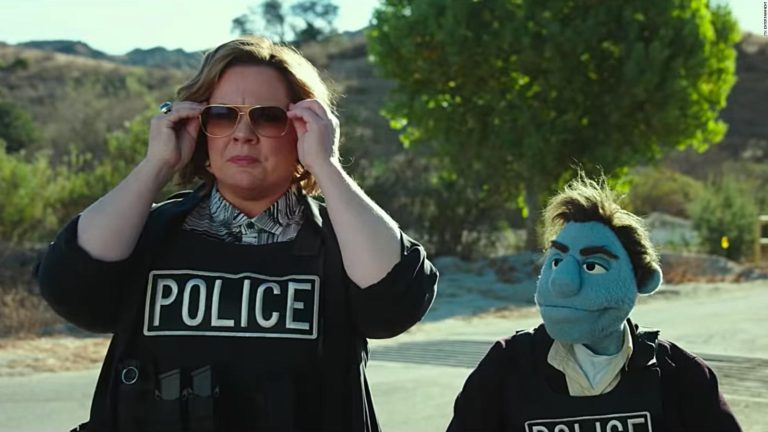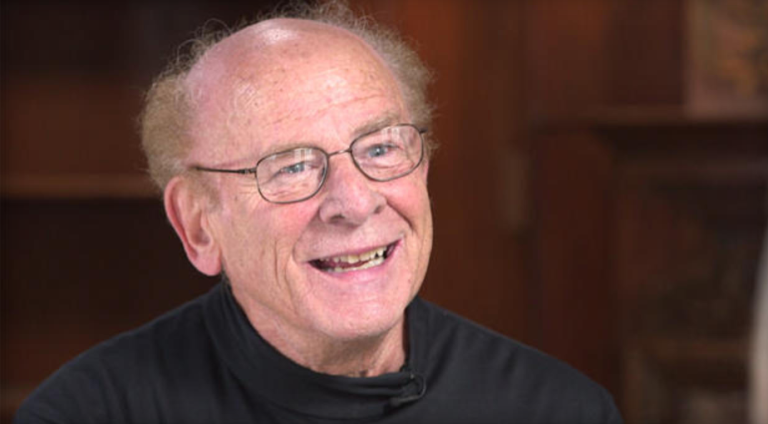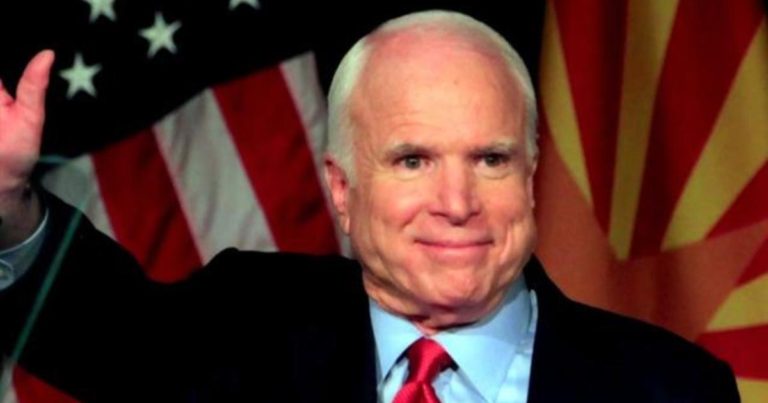The woman who sued Sony Music because she said they lied about Michael Jackson singing on the posthumous “Michael” album has basically lost her case today.
An appeals court ruled in favor of the Michael Jackson estate in the case, saying that Sony’s act of saying it was Michael Jackson singing– even if it wasn’t– doesn’t constitute fraud.
I will tell you that it is Michael Jackson singing three songs on the “Michael” album even though deranged fans claim it’s an impersonator named Jason Malachi.
The fans poisoned the sales of the album and turned what was a non issue into an idiotic scandal. They wasted the court’s time because they were bitter, or stupid, or both.
This decision doesn’t decide who sang the songs– Jackson or Malachi– but it ends the court case. The real story will never end in the minds of these people.
Nevertheless, I reported the existence of the songs in 2010. Michael Jackson spent three months living in the Franklin Lakes, NJ home of his friends the Cascios in 2007. Michael had long encouraged Eddie Cascio to be a producer and writer. Eddie and his friend James Porte– now his brother in law– had already recorded a bunch of songs with James singing lead. Michael offered to sing guide vocals to the tracks. They weren’t professional, there were no rehearsals, they were scratch vocals.
Jackson died in 2009. A year later, Eddie Cascio offered the recordings to Sony and the Jackson estate. I heard all of them at the time. The over zealous fans– who resented the Cascio family’s closeness to Jackson– went on a campaign to discredit the recordings.
But in his memoir “Remember the Time” about Jackson’s last couple of years, bodyguard Bill Whitworth wrote of their stay at the Cascios: “Mr, Jackson was also using the time to work on his music. Angel Cascio had that studio in the basement, and the two of them would spend hours down there.”
Not only that, but in the liner notes for the 25th anniversary edition of “Thriller,” the Cascio studios– called Angelikson– are listed from November 2007 for work done on two tracks. Jackson clearly worked on with Eddie “Angel” Cascio. But these are facts, and the fan who brought the nuisance suit–Vera Serova–and her posse will never believe it.
I’ve heard the six other Cascio tracks not used for “Michael.” I wish everyone else could hear them, too. Maybe now Sony will be brave enough to release them and not worry about vexacious litigants.
Tomorrow would have been Michael’s 60th birthday.
Filed 8/28/18
CERTIFIED FOR PUBLICATION
IN THE COURT OF APPEAL OF THE STATE OF CALIFORNIA
SECOND APPELLATE DISTRICT
DIVISION TWO
VERA SEROVA,
Plaintiff and Respondent,
v.
SONY MUSIC ENTERTAINMENT
et al.,
Defendants and Appellants.
B280526
(Los Angeles County
Super. Ct. No. BC548468)
APPEAL from an order of the Superior Court of
Los Angeles County. Ann I. Jones, Judge. Affirmed in part and
reversed in part.
Katten Muchin Rosenman, Zia F. Modabber, Andrew J.
Demko, Charlotte S. Wasserstein; Kinsella Weitzman Iser Kump
& Aldisert, Howard Weitzman and Suann C. Macisaac for
Defendants and Appellants.
Moss Bollinger, Ari E. Moss and Jeremy F. Bollinger for
Plaintiff and Respondent.
_________________________________
COURT OF APPEAL – SECOND DIST.
JOSEPH A. LANE, Clerk
Deputy Clerk
Aug 28, 2018
OCarbone
Defendants and appellants Sony Music Entertainment
(Sony), John Branca, as co-executor of the estate of Michael J.
Jackson (the Estate), and MJJ Productions, Inc. (collectively
Appellants) appeal from an order of the superior court partially
denying their motion to strike under the anti-SLAPP statute.
(Code Civ. Proc., § 425.16.)1 Plaintiff and respondent Vera
Serova (Serova) filed this putative class action against Appellants
and other defendants for marketing a posthumous Michael
Jackson album entitled simply Michael. Serova claims that the
album cover and a promotional video misleadingly represented
that Jackson was the lead singer on each of the 10 vocal tracks on
the album, when in fact he was not the lead singer on three of
those tracks.
Serova alleged claims under the Unfair Competition Law
(UCL; Bus.& Prof. Code, § 17200 et seq.) and the Consumers
Legal Remedies Act (CLRA; Civ. Code, § 1750 et seq.). Serova
also brought a fraud claim against defendants Edward Joseph
Cascio, James Victor Porte, and Cascio’s production company,
Angelikson Productions, LLC (collectively, the Cascio
Defendants), alleging that those defendants knowingly
misrepresented to Appellants that Jackson was the lead singer on
the three tracks at issue (the Disputed Tracks).2
1 Subsequent undesignated statutory references are to the
Code of Civil Procedure. “SLAPP” is an acronym for “[s]trategic
lawsuit against public participation.” (Briggs v. Eden Council for
Hope & Opportunity (1999) 19 Cal.4th 1106, 1109, fn. 1.)
2 The Cascio Defendants are not parties to this appeal.
2
Appellants brought an anti-SLAPP motion, which the trial
court granted in part but denied with respect to the two
communications at issue in this appeal. The trial court concluded
that the album cover, including statements about the contents of
the album, and a promotional video for the album were
commercial speech that was subject to regulation under the UCL
and the CLRA.
We reverse this portion of the trial court’s order. We
Jackson was the lead singer on the three Disputed Tdid
not simply promote sale of the album, but also stated a position
on a disputed issue of public interest. Before the album was
released, certain Jackson family members and others publicly
claimed that Jackson was not the lead singer on the Disputed
Tracks. Appellants disputed this claim. An attorney acting for
the Estate released a public statement outlining the steps
Appellants had taken to verify the authenticity of the tracks by
consulting with experts and persons who were familiar with
Jackson’s voice and recordings.
Thus, the identity of the artist on the three Disputed
Tracks was a controversial issue of interest to Michael Jackson
fans and others who care about his musical legacy. The identity
of the lead singer was also integral to the artistic significance of
the songs themselves. Under these circumstances, Appellants’
statements about the identity of the artist were not simply
commercial speech but were subject to full First Amendment
protection. They are therefore outside the scope of an actionable
unfair competition or consumer protection claim in this case.
3
BACKGROUND
1. The Anti-SLAPP Procedure
Section 425.16 provides for a “special motion to strike”
when a plaintiff asserts claims against a person “arising from any
act of that person in furtherance of the person’s right of petition
or free speech under the United States Constitution or the
California Constitution in connection with a public issue.”
(§ 425.16, subd. (b)(1).) Such claims must be stricken “unless the
court determines that the plaintiff has established that there is a
probability that the plaintiff will prevail on the claim.” (Ibid.)
Thus, ruling on an anti-SLAPP motion involves a two-step
procedure. First, the moving defendant must show that the
challenged claims arise from protected activity. (Baral v. Schnitt
(2016) 1 Cal.5th 376, 396; Rusheen v. Cohen (2006) 37 Cal.4th
1048, 1056.) Second, if the defendant makes such a showing, the
“burden shifts to the plaintiff to demonstrate that each
challenged claim based on protected activity is legally sufficient
and factually substantiated.” (Baral, at p. 396.) Without
resolving evidentiary conflicts, the court determines “whether the
plaintiff’s showing, if accepted by the trier of fact, would be
sufficient to sustain a favorable judgment.” (Ibid.)
Section 425.16, subdivision (e) defines the categories of acts
that are in “ ‘furtherance of a person’s right of petition or free
speech.’ ” Those categories include “any written or oral statement
or writing made in a place open to the public or a public forum in
connection with an issue of public interest,” and “any other
conduct in furtherance of the exercise of the constitutional right
of petition or the constitutional right of free speech in connection
with a public issue or an issue of public interest.” (§ 425.16, subd.
(e)(3) & (4).)
4
In 2003 the Legislature enacted section 425.17 to curb “a
disturbing abuse of Section 425.16 . . . which has undermined the
exercise of the constitutional rights of freedom of speech and
petition for the redress of grievances, contrary to the purpose and
intent of Section 425.16.” (§ 425.17, subd. (a).) Section 425.17
seeks to accomplish that goal by expressly excluding several
categories of claims from the scope of section 425.16.
Section 425.17, subdivision (c) establishes such an exclusion
for claims concerning commercial speech. That subdivision
provides that section 425.16 does not apply to “any cause of action
brought against a person primarily engaged in the business of
selling or leasing goods or services” if certain conditions exist,
including that: (1) the statement at issue “consists of
representations of fact about that person’s or a business
competitor’s business operations, goods, or services” that was
made to promote commercial transactions or was made “in the
course of delivering the person’s goods or services;” and (2) the
intended audience is an actual or potential customer or a person
likely to influence a customer. (§ 425.17, subd. (c)(1) & (2).)
Section 425.17 contains certain specifically defined
exceptions. One of those exceptions states that the commercial
speech provision in section 425.17, subdivision (c) does not apply
to “[a]ny action against any person or entity based upon the
creation, dissemination, exhibition, advertisement, or other
similar promotion of any dramatic, literary, musical, political, or
artistic work.” (§ 425.17, subd. (d)(2).)
5
2. Serova’s Allegations3
The album Michael was released on or about December 14,
2010, about 18 months after Michael Jackson’s death. Sony
released the album in conjunction with the Estate.
The album contained 10 songs. Serova alleges that the
three songs on the Disputed Tracks—“Breaking News,”
“Monster,” and “Keep Your Head Up” (the Songs)—have been
controversial “[s]ince Michael’s inception.”
Serova claims that the Cascio Defendants recorded the
initial versions of the Disputed Tracks and had “exclusive
knowledge” that the lead vocals for the Songs were actually
performed by a singer other than Michael Jackson. Serova
alleges that Cascio then falsely represented to Appellants that
Michael Jackson was the singer.
Prior to Michael’s release, various members of Michael
Jackson’s family and others familiar with his recordings disputed
whether he was the lead singer on the Disputed Tracks. In
response to those concerns, Sony and the Estate (through
Attorney Howard Weitzman) both publicly issued statements
confirming their belief that Jackson was the singer.
In his statement (the Weitzman Statement), Weitzman
explained that many persons who were familiar with Jackson’s
work had confirmed that he was the lead singer on the Disputed
3 As explained below, the trial court ruled on Appellant’s
anti-SLAPP motion based upon the allegations in Serova’s First
Amended Complaint (Complaint) and a stipulation that
established certain background facts for purposes of the motion
only. Thus, the relevant facts are primarily those alleged in the
Complaint.
6
Tracks, including former producers, engineers, performers, and
directors who had worked with Jackson. He stated that the
Estate and Sony had also retained forensic musicologists who
examined the Disputed Tracks and concluded that the lead singer
was actually Jackson. He also stated that he had spoken to the
singer whom some persons had “wrongfully alleged was a
‘soundalike’ singer that was hired to sing” on the Disputed
Tracks, and that the singer had denied any involvement with the
project. Weitzman explained that, “given the overwhelming
objective evidence resulting from the exhaustive investigations,”
Sony decided to include the Disputed Tracks on the album
“because they believed, without reservation, that the lead vocal[s]
on all of those tracks were sung by Michael Jackson.”
The album cover for Michael (Album Cover) included a
statement that “ ‘[t]his album contains 9 previously unreleased
vocal tracks performed by Michael Jackson.’ ”4 A video released
before the album (the Promotional Video) described Michael as
“ ‘a brand new album from the greatest artist of all time.’ ”
While appearing on the Oprah Winfrey show, Cascio also stated
that Jackson performed the lead vocals on the Disputed Tracks.
The Complaint alleges that the lead singer on the Disputed
Tracks actually sounds like the “soundalike” singer mentioned in
the Weitzman Statement. Serova claims she discovered evidence
indicating that the lead singer on the Disputed Tracks was not
Michael Jackson. Among other things, she claims that:
(1) Cascio did not produce any “demos, outtakes, alternate takes,
4 One of the tracks on the album had been previously
recorded.
7
and multi-track recordings” when requested; (2) Jackson never
mentioned that he had recorded the Songs; (3) the Songs did not
appear on a list of ongoing or planned projects found in Michael
Jackson’s house after his death; and (4) various persons that the
Weitzman Statement said had confirmed that the lead singer on
the Disputed Tracks was Jackson in fact had doubts about that
conclusion.
Serova also hired an audio expert who prepared a report
concluding that Michael Jackson “very likely did not sing” the
lead vocals on the Disputed Tracks. The report was peerreviewed
by another expert who concluded that the study’s
“methodologies and conclusions were reasonable.”
The Complaint alleges claims against all defendants under
the CLRA and UCL, and asserts a fraud claim against the Cascio
Defendants only. The Complaint claims that thousands of
putative class members purchased Michael and lost “money or
property” as a result of the alleged misleading representations.
3. Appellants’ Anti-SLAPP Motion
Appellants and the Cascio Defendants filed motions to
strike under section 425.16. Appellants argued that Serova’s
claims arose from protected speech under prong one of the anti-
SLAPP procedure. With respect to prong two, Appellants argued
that Serova could not succeed on her claims against them because
their challenged statements about the identity of the lead singer
on the Disputed Tracks were noncommercial speech as a matter
of law and no reasonable consumer could find the statements
misleading.
To permit a ruling on the anti-SLAPP motions in advance
of discovery, the parties stipulated that, “solely for purposes of
this determination on the Motions,” Michael Jackson did not sing
the lead vocals on the three Disputed Tracks (the Stipulation).
8
The parties also stipulated to the authenticity of copies of the
Weitzman Statement, the Album Cover, and the Promotional
Video.
The trial court granted the defendants’ motions with
respect to allegations concerning the Weitzman Statement and
Cascio’s statement on the Oprah Winfrey show, but denied the
motions with respect to allegations concerning statements on the
Album Cover and in the Promotional Video.
Under prong one of the anti-SLAPP procedure, the trial
court ruled that all the statements addressed in the defendants’
motions arose from conduct in furtherance of the defendants’
right of free speech concerning an issue of public interest. The
court concluded that the Weitzman Statement was “made in a
public forum about a matter of public interest.” The court
reasoned that the Weitzman Statement “responded to a matter of
public concern, i.e., the authenticity of certain recordings released
posthumously and claimed to have been written and recorded by
a pop superstar.” Similarly, the court concluded that Cascio’s
statement on the Oprah Winfrey show addressed “the same
controversy.”
In contrast, the trial court concluded that the Album Cover
and the Promotional Video were simply promotional materials
that “did not speak to the controversy surrounding the
performance [or] address or refute” the allegations concerning the
Disputed Tracks. The court nevertheless found that statements
on the Album Cover and in the Promotional Video arose from
protected conduct because “Michael Jackson’s professional
standing and accomplishments created legitimate and widespread
attention to the release of a new album.”
With respect to prong two, the trial court found that the
Weitzman Statement and Cascio’s statements on the Oprah
9
Winfrey show were noncommercial speech. The court concluded
that those statements were not made to promote or sell the
album, but addressed “a controversy regarding the veracity of the
claims surrounding the release of the album.”
However, the court concluded that the challenged
statements on the Album Cover and in the Promotional Video
were advertisements constituting commercial speech. The court
rejected the defendants’ argument that this speech was
“inextricably intertwined” with the Songs themselves under Riley
v. Nat’l Fed’n of Blind (1988) 487 U.S. 781, 796 (Riley). The court
reasoned that “[n]othing in this case prevented Defendants from
giving the album a different title and look or from electing not to
attest to the authenticity of the recordings on the cover or in a
commercial.”
The court also found that, assuming (pursuant to the
parties’ Stipulation) that Michael Jackson was not actually the
lead singer on the Disputed Tracks, both the Album Cover and
the Promotional Video were likely to deceive a reasonable
consumer. The court concluded that images of Michael Jackson
and the challenged statements on the Album Cover, along with
the lack of any attribution to others, conveyed the message that
Jackson was the lead singer on the Disputed Tracks. The court
also concluded that a reasonable consumer would believe that
Michael Jackson was the “artist” referenced in the statement on
the Promotional Video that Michael was “ ‘a brand new album
from the greatest artist of all time.’ ”
DISCUSSION
Appellants challenge the trial court’s rulings that: (1) the
Promotional Video and the Album Cover were commercial speech
that may be subject to claims under the UCL and CLRA; and
10
(2) the representations in those materials were likely to deceive a
reasonable consumer. Serova argues that those rulings were
correct, and also asserts as an alternative ground for affirmance
that her claims do not “arise from” protected free speech activity
under prong one of the anti-SLAPP procedure. (See Klem v.
Access Ins. Co. (2017) 17 Cal.App.5th 595, 609 [“A prevailing
party on an anti-SLAPP motion need not file a cross-appeal to
preserve his disagreement with the trial court’s reasoning”].)5
We apply a de novo standard of review to the trial court’s
rulings on the anti-SLAPP motion. (Soukup v. Law Offices of
Herbert Hafif (2006) 39 Cal.4th 260, 269, fn. 3.)
1. Serova’s Claims Concerning the Promotional Video
and the Album Cover Arise from Appellants’ Right of
Free Speech Under the United States and California
Constitutions
Appellants claim the trial court correctly concluded that
their challenged conduct arose from protected speech concerning
an issue of public interest, but also suggest that we need not
reach that issue. Appellants argue that the Legislature’s decision
to create an exception for the marketing of musical works under
section 425.17, subdivision (d)(2) shows a legislative intent that
such speech “is eligible for anti-SLAPP protection,” which is
5 Serova did not appeal from the trial court’s ruling
granting the defendants’ anti-SLAPP motion with respect to the
Weitzman e-mail and Cascio’s statement during the Oprah
Winfrey interview. Thus, the only claims at issue in this appeal
concern the representations in the Promotional Video and the
Album Cover.
11
“essentially dispositive of step one of the anti-SLAPP analysis.”
We first consider that argument.
a. The significance of the Legislature’s exclusion of
music advertisements from the scope of section
425.17
As mentioned, section 425.17, subdivision (d)(2) provides
that the “creation, dissemination, exhibition, advertisement, or
other similar promotion of any dramatic, literary, musical,
political, or artistic work” is outside the scope of the commercial
speech provision in section 425.17, subdivision (c). The exception
in section 425.17, subdivision (d)(2) certainly means that the
promotion of a musical work is not included within the categories
of conduct that the Legislature specifically stated were not
subject to anti-SLAPP relief. However, the Legislature’s decision
to exclude the advertising of musical works from section 425.17
does not mean that it also intended to afford anti-SLAPP
protection to such conduct in every circumstance, regardless of
the requirements of section 425.16.
Such a conclusion would be inconsistent with the
Legislature’s stated intent. The Legislature specifically stated
that it enacted section 425.17 to curb abuses of the anti-SLAPP
law that were “contrary to the purpose and intent of Section
425.16.” (§ 425.17, subd. (a).) That statement suggests that our
Legislature was concerned that the courts were granting too
broad a reading to what constitutes “protected” conduct under
section 425.16, subdivision (e). Appellants’ argument, if accepted,
would commit that very same sin because it would require courts
to treat the types of speech delineated in section 425.17,
subdivision (d)(2) as subject to the anti-SLAPP law without any
showing that such speech meets the definition of “protected”
conduct under section 425.16, subdivision (e).
12
The interpretation that Appellants suggest would also be
inconsistent with the definitions of protected conduct under
section 425.16. Section 425.16, subdivision (e)(3) and (4) each
require that protected conduct must have some connection to a
“public issue” or an “issue of public interest.” Appellants’
interpretation of section 425.17, subdivision (d)(2) ignores that
requirement. For example, an action challenging an
advertisement falsely claiming that a musical album contains a
particular song would be an action “based upon the . . .
advertisement” of a musical work. (§ 425.17, subd. (d)(2).)
Appellants do not provide any reason to believe that the
Legislature intended to provide automatic anti-SLAPP protection
to such a mundane commercial misrepresentation simply because
the statement was made in connection with the advertisement of
a musical work. (Cf. Rezec v. Sony Pictures Entertainment, Inc.
(2004) 116 Cal.App.4th 135, 143–144 (Rezec) [advertisement
referring to a purported movie endorsement by a fictional music
critic did not concern an issue of public interest just “because the
public is interested in films”].)
The court in Dyer v. Childress (2007) 147 Cal.App.4th 1273
rejected a similar argument. After reviewing the legislative
history concerning section 425.17, subdivision (d)(2), the court
rejected the defendant’s claim that “by expressly exempting
motion pictures from the anti-SLAPP limitations imposed in
section 425.17, subdivisions (b) and (c), the Legislature
acknowledged that motion pictures are more deserving of
protection than other forms of expression not enumerated.” (Id.
at pp. 1283–1284.) The court concluded that “[t]he exclusion of
motion pictures from the exemptions to the limitations set forth
in section 425.17, subdivisions (b) and (c) means only that anti-
SLAPP motions remain available to defendants who are creators
13
and distributors of motion pictures . . . . [¶] The exception of
section 425.17, subdivision (d)(2) does not eliminate the need to
show significant public interest in the conduct at the heart of the
plaintiff’s complaint or expand the scope of the anti-SLAPP law to
provide protection to motion picture defendants in every context.”
(Id. at p. 1284.)
Similarly, the exception of section 425.17, subdivision (d)(2)
does not provide anti-SLAPP protection to sellers of music in
every context. We therefore must consider whether Appellants’
challenged statements were made “in connection with a public
issue or an issue of public interest.” (§ 425.16, subd. (e).)
b. The challenged promotional statements in this
case
Serova claims that Appellants’ statements about the
identity of the lead singer on the Disputed Tracks were simply
claims about the contents of a commercial product that
Appellants offered for sale. We disagree that the representation
at issue was so limited. Serova’s own allegations describe the
public controversy concerning the Disputed Tracks. Moreover, a
significant body of case law holds that prominent entertainers
and their accomplishments can be the subjects of public interest
for purposes of the anti-SLAPP statute.
The Complaint alleges that, “[b]efore Michael’s release,
numerous people familiar with Michael Jackson’s voice disputed
the authenticity” of the Disputed Tracks. As discussed above,
Sony and the Estate released public statements in response,
including the detailed Weitzman Statement. Serova further
alleges that, “[s]ince Michael’s inception, controversy has
surrounded three of the album’s ten songs.”
Public interest in the life and work of entertainers and
other celebrities can create an “issue of public interest” for
14
purposes of section 425.16, subdivision (e). “ ‘ “[T]here is a public
interest which attaches to people who, by their accomplishments,
mode of living, professional standing or calling, create a
legitimate and widespread attention to their activities.” ’ ”
(Stewart v. Rolling Stone LLC (2010) 181 Cal.App.4th 664, 677–
678 (Stewart), quoting Eastwood v. Superior Court (1983) 149
Cal.App.3d 409, 422; see also No Doubt v. Activision Publishing,
Inc. (2011) 192 Cal.App.4th 1018, 1027
; Hall
v. Time Warner, Inc. (2007) 153 Cal.App.4th 1337, 1347 [Marlon
Brando’s decisions concerning the distribution of his assets was
an issue of public interest].) It is beyond dispute that Michael
Jackson was a famous entertainer.
Facts concerning the creation of works of art and
entertainment can also be an issue of public interest for purposes
of the anti-SLAPP statute. For example, in Kronemyer v. Internet
Movie Database Inc. (2007) 150 Cal.App.4th 941, the plaintiff
challenged the omission of his name from the credits listed for the
movie “My Big Fat Greek Wedding” on a widely visited website.
(Id. at p. 944.) The court concluded that the movie “was a topic of
widespread public interest,” and the website was a public forum.
(Id. at pp. 949–950.) Accordingly, the plaintiff’s action
challenging the listings was “within the ambit of section 425.16,
subdivision (e)(3) and (4).” (Id. at p. 950; see also Tamkin v. CBS
Broadcasting, Inc. (2011) 193 Cal.App.4th 133, 143–144 [there
was a “public interest in the writing, casting and broadcasting” of
a television episode for purposes of the anti-SLAPP statute].)
Similarly, here, there was significant interest in the release
of the posthumous album Michael. Whether or not the lead
singer on the Disputed Tracks was actually Michael Jackson was
15
therefore also a matter of significant public interest, as confirmed
by Serova’s own allegations.
This public controversy distinguishes this case from cases
that Serova cites concerning allegedly misleading descriptions of
a particular commercial product or service. (See Consumer
Justice Center v. Trimedica International, Inc. (2003) 107
Cal.App.4th 595, 599, 601 [claims about a pill for breast
enlargement]; Nagel v. Twin Laboratories, Inc. (2003) 109
Cal.App.4th 39, 43–46 [list of ingredients on labels for nutritional
and dietary supplements]; Scott v. Metabolife Internat., Inc.
(2004) 115 Cal.App.4th 404, 423 [claims about the safety and
efficacy of a particular weight loss product]; L.A. Taxi
Cooperative, Inc. v. The Independent Taxi Owners Assn. of
Los Angeles (2015) 239 Cal.App.4th 918, 921, 927–928 [alleged
misleading advertisements concerning contact information for
companies providing taxi services]; Jewett v. Capital One Bank
(2003) 113 Cal.App.4th 805, 814–816 [alleged false statements in
credit card solicitations].)
The representations at issue here concerned the body of
work of a well-known artist and an album containing his songs
that generated significant public attention. We therefore
conclude that the issue was one of “public interest” for purposes of
section 425.16, subdivision (e)(3) and (4).
2. The Challenged Statements Were
Noncommercial Speech Outside the Scope of
Serova’s Consumer Protection Claims
Appellants argue that Serova cannot show a probability of
success on her UCL and CLRA claims under prong two of the
anti-SLAPP analysis because those statutes only apply to
commercial speech. They claim that their challenged statements
about the lead singer on the Disputed Tracks were not
16
commercial speech, or, if they were, that those statements were
inextricably intertwined with the protected contents of the Songs
themselves.
Appellants argue that the consumer protection claims that
Serova asserts against them apply only to commercial speech. A
number of cases support that assertion. (See Kasky v. Nike, Inc.
(2002) 27 Cal.4th 939, 952 (Kasky) [identifying criteria for
determining whether speech may constitutionally be regulated as
commercial speech under California’s false advertising laws];
Rezec, supra, 116 Cal.App.4th at p. 140 [California’s consumer
protection laws, like the unfair competition law, govern only
commercial speech]; Keimer v. Buena Vista Books, Inc. (1999) 75
Cal.App.4th 1220, 1231 (Keimer) [Bus. & Prof. Code, §§ 17200
et seq. and 17500 et seq. do not “seek to restrict noncommercial
speech in any manner”]; O’Connor v. Superior Court (1986) 177
Cal.App.3d 1013, 1019.) Serova does not dispute this. Moreover,
she did not argue below and does not argue on appeal that
Appellants’ challenged statements are actionable even if they are
noncommercial speech. Thus, if Appellant’s challenged
statements are noncommercial speech Serova’s claims against
them must be stricken.
a. Identifying commercial speech
Restrictions on purely commercial speech are subject to a
lesser level of scrutiny than are “ ‘other constitutionally
safeguarded forms of expression.’ ” (Kasky, supra, 27 Cal.4th at
p. 952, quoting Bolger v. Youngs Drug Products Corp. (1983) 463
U.S. 60, 64–65 (Bolger).) Moreover, “commercial speech that is
false or misleading is not entitled to First Amendment protection
and ‘may be prohibited entirely.’ ” (Kasky, at p. 953, quoting In re
R.M.J. (1982) 455 U.S. 191, 203.)
17
The United States Supreme Court first held that
commercial speech is entitled to some constitutional protection in
Bigelow v. Virginia (1975) 421 U.S. 809. In Bigelow, the court
rejected the proposition that “advertising, as such, was entitled to
no First Amendment protection.” (Id. at p. 825.) Following that
decision, courts have had to grapple with the distinction between
expressive activities that are merely commercial in nature and
those that are subject to more stringent First Amendment
protection.
In Bolger, supra, the court held that materials distributed
by a manufacturer of contraceptives, including both promotional
flyers and informational pamphlets about contraceptives, were
commercial speech. (463 U.S. at pp. 62, 66–68.) Most of the
mailings at issue fell “within the core notion of commercial
speech—‘speech which does “no more than propose a commercial
transaction.” ’ ” (Id. at p. 66, quoting Virginia State Bd. of
Pharmacy v. Virginia Citizens Consumer Council (1976) 425 U.S.
748, 762 (Virginia Pharmacy).) However, the informational
pamphlets required further analysis. The court identified three
factors indicating that the pamphlets were commercial speech:
(1) the pamphlets were “conceded to be advertisements”; (2) they
referred to a specific product; and (3) the defendant had an
economic motivation for mailing them. (Bolger, at pp. 66–67.)
The court stated that none of these factors alone was sufficient to
show that the speech was commercial, but “[t]he combination of
all these characteristics . . . provides strong support” for the
decision that the informational pamphlets were commercial
speech. (Id. at p. 67.)
In Kasky, supra, 27 Cal.4th 939, our Supreme Court
considered the factors the court identified in Bolger, supra, 463
U.S. 60, along with other relevant United States Supreme Court
18
precedent and crafted a “limited-purpose” test for identifying
commercial speech. The test applies when, as here, “a court must
decide whether particular speech may be subjected to laws aimed
at preventing false advertising or other forms of commercial
deception.” (Kasky, at p. 960.) The court directed that a court
faced with such a decision should consider “three elements: the
speaker, the intended audience, and the content of the message.”
(Ibid.)
The court in Kasky applied those factors to the allegations
that the defendant, Nike, made false statements about labor
practices in its own business operations. (27 Cal.4th at pp. 969–
970.) The court held that these alleged statements constituted
commercial speech that was actionable under California’s
consumer protection laws. (Ibid.)
b. Appellants’ challenged statements
Applying the three-factor test for identifying commercial
speech described in Kasky, we conclude that Appellants’
challenged representations were noncommercial speech.
The first two factors—the speaker and the intended
audience—both suggest a commercial purpose. Appellants were
“engaged in commerce” in making representations on the Album
Cover and on the Promotional Video to sell the album. (Kasky,
supra, 27 Cal.4th at p. 963.) And the audience for those
representations was potential purchasers of the album. (Id. at
p. 964.)
However, the third factor—the content of the challenged
speech—shows that the speech at issue here is critically different
from the type of speech that may be regulated as purely
commercial speech under Kasky. That is so for two reasons.
First, Appellants’ challenged statements concerned a publicly
disputed issue about which they had no personal knowledge.
19
Second, the statements were directly connected to music that
itself enjoyed full protection under the First Amendment.
i. Personal knowledge
The court in Kasky explained that, “at least in relation to
regulations aimed at protecting consumers from false and
misleading promotional practices, commercial speech must
consist of factual representations about the business operations,
products, or services of the speaker (or the individual or company
on whose behalf the speaker is speaking), made for the purpose of
promoting sales of, or other commercial transactions in, the
speaker’s products or services.” (27 Cal.4th at p. 962.) This
requirement relates directly to the reasons for denying First
Amendment protection to false or misleading commercial speech.
As the court explained, the United States Supreme Court “has
stated that false or misleading commercial speech may be
prohibited because the truth of commercial speech is ‘more easily
verifiable by its disseminator’ and because commercial speech,
being motivated by the desire for economic profit, is less likely
than noncommercial speech to be chilled by proper regulation.”
(Ibid., quoting Virginia Pharmacy, supra, 425 U.S. at p. 772, fn.
24.)
These factors were important for the court’s ruling. The
court in Kasky ascribed great significance to the fact that, “[i]n
describing its own labor policies, and the practices and working
conditions in factories where its products are made, Nike was
making factual representations about its own business
operations.” (27 Cal.4th at p. 963, italics added.) The court
concluded that “Nike was in a position to readily verify the truth
of any factual assertions it made on these topics,” and that
commercial regulation was “unlikely to deter Nike from speaking
truthfully or at all about the conditions in its factories.” (Ibid.)
20
Here, Appellants’ representations about the identity of the
lead singer on the Disputed Tracks did not concern their own
business operations or a fact of which they had personal
knowledge. Serova alleges that the Cascio Defendants, not
Appellants, “jointly created, produced, and recorded the initial
versions” of the Disputed Tracks. She claims that the “lead
vocals on these songs were performed by another singer under the
direction, and with the knowledge, cooperation, participation, and
substantial assistance of the Cascio Defendants.” And she
further alleges that the Cascio Defendants had “exclusive
knowledge of the fact that Jackson did not perform the songs.”
(Italics added.)6
As discussed above, Appellants’ challenged statements in
the Promotional Video and on the Album Cover concerned an
issue of public interest and debate—whether the three songs on
the Disputed Tracks should be included in Michael Jackson’s
body of work. Appellants did not record the songs and, according
to Serova’s allegations, were themselves deceived about the
identity of the singer. Appellants’ statements therefore lacked
the critical element of personal knowledge under the Kasky
standard.
6 As mentioned above, the parties stipulated below for
purposes of the anti-SLAPP motions that Michael Jackson did not
sing the lead vocals on the three Disputed Tracks. Accordingly,
for purposes of their appeal, Appellants state that they accept
“that Jackson did not sing the lead vocals” on the Disputed
Tracks. However, Appellants did not stipulate that they knew the
identity of the singer.
21
As the trial court correctly concluded, Appellants’
statements directly addressing the public controversy about the
identity of the singer—including the Weitzman Statement—were
noncommercial. The challenged statements on the Album Cover
and the Promotional Video also staked out a position in that
controversy by identifying the singer as Michael Jackson. The
fact that those statements were made in the context of promoting
the album does not change their constitutional significance.
Economic motivation is only one of the factors, insufficient
in itself, that may indicate that speech is commercial. (Bolger,
supra, 463 U.S. at p. 67.) As our Supreme Court explained in
Kasky, whether speech is commercial or noncommercial should
take account of the reasons for affording commercial speech less
constitutional protection. (27 Cal.4th at pp. 958, 965.) The court
in Kasky recognized that the speech at issue in that case—Nike’s
statements about labor practices in the factories that
manufactured its products—addressed an issue of public interest.
The reason that Nike’s speech could be subject to regulation
under the state’s unfair competition and false advertising laws
was that it concerned facts about Nike’s own business operations,
which were “ ‘more easily verifiable’ ” and “ ‘less likely to be
chilled by proper regulation’ ” than other speech about the
publicly-debated issue of international labor practices. (Id. at pp.
965, 967, quoting Virginia Pharmacy, supra, 425 U.S. at p. 772,
fn. 24.) The court cautioned that it did not purport to decide
whether speech should be considered commercial if all of the
factors that the court identified—including the element of
22
personal knowledge about one’s own business operations—were
not present. (Kasky, at p. 964.)7
The absence of the element of personal knowledge is highly
significant here. Because Appellants lacked actual knowledge of
the identity of the lead singer on the Disputed Tracks, they could
only draw a conclusion about that issue from their own research
and the available evidence. Under these circumstances,
Appellant’s representations about the identity of the singer
amounted to a statement of opinion rather than fact. (Cf.
Bernardo v. Planned Parenthood Federation of America (2004)
115 Cal.App.4th 322, 348 [statements of opinion on Planned
Parenthood’s website concerning scientific research about
abortion and breast cancer were not commercial speech].)
The lack of personal knowledge here also means that
Appellants’ challenged statements do not fit the definition of
speech that is “ ‘less likely to be chilled by proper regulation.’ ”
(Kasky, supra, 27 Cal.4th at p. 965, quoting Virginia Pharmacy,
supra, 425 U.S. at p. 772, fn. 24.) The “regulation” at issue here
is the UCL and the CLRA. Serova could obtain relief under these
consumer protection statutes without proof of intentional or
willful conduct. (See Kasky, at pp. 980–981 (dis. opn. of
7 For example, the court might well have reached a
different conclusion in Kasky if the statements at issue concerned
the labor practices of an independent commercial supplier who
simply sold products to Nike for resale. The court specifically
noted that Nike had entered into a memorandum of
understanding assuming responsibility for its subcontractors’
compliance with local labor laws. (Kasky, supra, 27 Cal.4th at
p. 947.)
23
Brown, J.; Podolsky v. First Healthcare Corp. (1996) 50
Cal.App.4th 632, 647 [violation of the UCL is a “strict liability
offense”].)8 Thus, to avoid possible liability for a mistaken
judgment about the lead singer on the Disputed Tracks,
Appellants would have needed to either: (1) provide disclaimers
about the singer’s identity in its marketing materials; or (2) omit
the Disputed Tracks from the album.9
The chilling effect of the second option is obvious. But the
first option also has First Amendment implications. The United
States Supreme Court recently emphasized the potentially
problematic nature of regulations that compel speech, even in a
commercial context. In Nat’l Inst. of Family & Life Advocates v.
Becerra (2018) ___ U.S. ___, 201 L.Ed.2d 835 (Life Advocates), the
court held that a California law requiring notices in health care
clinics concerning available health care services, including
8 The CLRA does provide for a good faith defense to an
action for damages, but the defense requires proof of “appropriate
correction, repair or replacement or other remedy of the goods
and services.” (See Civ. Code, §§ 1782, subds. (b) & (c), and 1784.)
In contrast to the consumer claims asserted against Appellants,
Serova’s fraud claim against the Cascio Defendants of course does
include a scienter element. That claim is still pending in the trial
court.
9 The record illustrates this dilemma. During oral
argument, the trial court suggested that Appellants could have
avoided legal challenge by leaving the songs at issue off of the
album entirely. The trial court’s written ruling also observes that
Appellants could have given the album “a different title and look”
or elected “not to attest to the authenticity of the recordings on
the cover or in a commercial.”
24
abortion, likely violated the First Amendment. The court
declined to recognize an exception to strict scrutiny review under
the First Amendment for “professional speech,” noting that the
court has permitted compelled disclosures only in the context of
professionals’ “commercial advertising” concerning “ ‘purely
factual and uncontroversial information about the terms under
which . . . services will be available.’ ” (Id. at p. 848.) By
compelling a particular disclosure, the law at issue amounted to
an impermissible “content-based regulation of speech.” (Id. at
p. 846.)10
By compelling disclosure of the controversy over the
Disputed Tracks to avoid liability, the UCL and CLRA would, in
effect, require Appellants to present views in their marketing
materials with which they do not agree. The possibility that
applying these unfair competition and consumer protection laws
10 That the court’s reasoning in Life Advocates has
implications beyond just professional disclosures is shown by
Justice Breyer’s dissent, which cautions that “the majority’s view,
if taken literally, could radically change prior law, perhaps
placing much securities law or consumer protection law at
constitutional risk, depending on how broadly its exceptions are
interpreted.” (Life Advocates, supra, 201 L.Ed.2d at p. 857, dis.
opn. of Breyer, J.) The majority countered by stating that it does
not “question the legality of . . . purely factual and
uncontroversial disclosures about commercial products.” (Id. at
p. 852, italics added.) Here, any compelled disclosure would not
be “uncontroversial”; Serova herself alleges that “controversy has
surrounded” the three Disputed Tracks. Nor would it be “purely
factual” from Appellants’ perspective, as they had no personal
knowledge of the facts.
25
to Appellants’ speech would have the effect of chilling the content
of that speech—whether by preventing the sale of particular
musical works or by regulating the expression of a point of view
on a public controversy about those works—is a further reason to
conclude that the speech at issue was noncommercial.
ii. The relationship between the
challenged statements and the art
that they promoted
Appellants’ statements in the Promotional Video and on the
Album Cover described and promoted the album, of which the
Disputed Tracks were a part. The music on the album itself is
entitled to full protection under the First Amendment. (Stewart,
supra, 181 Cal.App.4th at p. 682.) The challenged statements
therefore related directly to a piece of art that has independent
significance under the First Amendment.
The identity of a singer, composer, or artist can be an
important component of understanding the art itself. No one
could reasonably dispute that knowing whether a piece of music
was composed by Johann Sebastian Bach or a picture was painted
by Leonardo Da Vinci informs the historical understanding of the
26
work.11 Similarly, although the art at issue is contemporary and
in a different genre, whether Michael Jackson was actually the
lead singer of the songs on the Disputed Tracks certainly affects
the listener’s understanding of their significance. Thus, the
marketing statements at issue here are unlike the purely factual
product or service descriptions constituting commercial speech in
cases that Serova cites. (See Benson v. Kwikset Corp. (2007) 152
Cal.App.4th 1254, 1268 [representation that products were
manufactured in the United States]; Peel v. Atty. Registration &
Disciplinary Comm’n (1990) 496 U.S. 91, 99–100 [advertisement
concerning attorney’s certification as an expert]; Rubin v. Coors
Brewing Co. (1995) 514 U.S. 476, 481 [descriptions of alcohol
content on beer labels].)
We do not suggest that the challenged statements here are
noncommercial speech only because they promoted an art work.
We agree with the court in Rezec, supra, 116 Cal.App.4th 135,
that advertising is not necessarily excluded from the category of
commercial speech simply because it promotes a product that is
11 While these examples are only illustrative, they are not
purely hypothetical. (See Dutter & Nikkhah, Bach works were
written by his second wife, claims academic, The Telegraph
(Apr. 23, 2006)
[as of
Aug. 23, 2018]; Sayej, Artistic License? Experts doubt Leonardo
da Vinci painted $450m Salvator Mundi, The Guardian (Nov. 20,
2017)
[as of Aug. 23, 2018].)
27
itself subject to full First Amendment protection. In Rezec, the
court held that film advertisements that featured fictional
endorsements from a nonexistent critic was commercial speech.
The court rejected the “absolutist approach” that “because the
films themselves are noncommercial speech, so are the
advertisements.” (Id. at p. 142.)12
Such an approach would ascribe full First Amendment
significance to any commercial representation about a piece of
art, no matter how mundane or willfully misleading. For
example, returning to the hypothetical advertisement mentioned
above, there is no apparent reason why a statement falsely
stating that a particular song is included in an album should be
subject to full First Amendment protection simply because the
statement promotes the sale of music.13 However, where, as
12 In Keimer, supra, the court concluded that
advertisements repeating “verifiably false or misleading”
statements about investment returns contained in a book were
commercial speech despite the fully protected status of the books
themselves under the First Amendment. (75 Cal.App.4th at
p. 1231.) The statements at issue here were not “verifiably false”
based upon the information available to Appellants, so we need
not consider this holding.
13 Thus, we do not accept Appellants’ suggestion that an
advertisement promoting a particular piece of art is necessarily
“inextricably intertwined” with the First Amendment content of
the art itself simply because it makes a representation about the
identity of the artist. (See Riley, supra, 487 U.S. at p. 796.) The
distinguishing features here are that: (1) the identity of the artist
was itself an issue of public discussion and interest; and (2)
Appellants had no personal knowledge of the issue.
28
here, a challenged statement in an advertisement relates to a
public controversy about the identity of an artist responsible for a
particular work, and the advertiser has no personal knowledge of
the artist’s identity, it is appropriate to take account of the First
Amendment significance of the work itself in assessing whether
the content of the statement was purely commercial.
This conclusion is consistent with the flexible approach that
the United States Supreme Court has adopted for identifying
commercial speech. In Bolger, supra, the court explained that no
single factor that it identified as a marker of commercial speech is
sufficient in itself to classify particular speech as commercial, nor
must each factor “necessarily be present in order for speech to be
commercial.” (463 U.S. at pp. 66–67 and fn. 14.) The court
concluded that the presence of all three factors in that case
“provides strong support” for the conclusion that the
informational pamphlets at issue were commercial. (Id. at p. 67.)
However, citing a prior opinion involving the advertising of
religious books, the court also cautioned that “a different
conclusion may be appropriate in a case where the pamphlet
advertises an activity itself protected by the First Amendment.”
(Id. at p. 67, fn. 14.)
That is the situation here. The challenged statements in
the Promotional Video and on the Album Cover concerned music
that is “itself protected by the First Amendment.” (Bolger, supra,
463 U.S. at p. 67, fn. 14.) While not itself dispositive, the fact
that the challenged statements promoted a piece of art is
appropriate to consider in assessing the content of the speech
under the Kasky guidelines. (Kasky, supra, 27 Cal.4th at p. 961.)
3. Conclusion
Appellant’s challenged statements on the Album Cover and
in the Promotional Video were noncommercial speech outside the
29
scope of the consumer protection claims that Serova asserts
against Appellants. As a matter of law Serova therefore cannot
show a likelihood that she will prevail on her claims under prong
two of the anti-SLAPP procedure, and her claims against
Appellants must be stricken. We therefore need not reach the
issue of whether the challenged statements would be misleading
to a reasonable consumer.
We emphasize that this holding is based on the record in
this case and the issues that have been appealed. The Cascio
Defendants have not appealed, and our holding therefore does not
reach any portion of the trial court’s order with respect to them.
Nor do we purport to decide whether statements in another
context concerning the marketing of creative works might
constitute commercial speech.
30
DISPOSITION
The trial court’s order is affirmed in part and reversed in
part. The portions of the Complaint alleging claims against
Appellants are ordered stricken. In all other respects the trial
court’s order is affirmed. Appellants are entitled to their costs on
appeal.
CERTIFIED FOR PUBLICATION.
LUI, P. J.
We concur:
CHAVEZ, J.
HOFFSTADT, J.
31


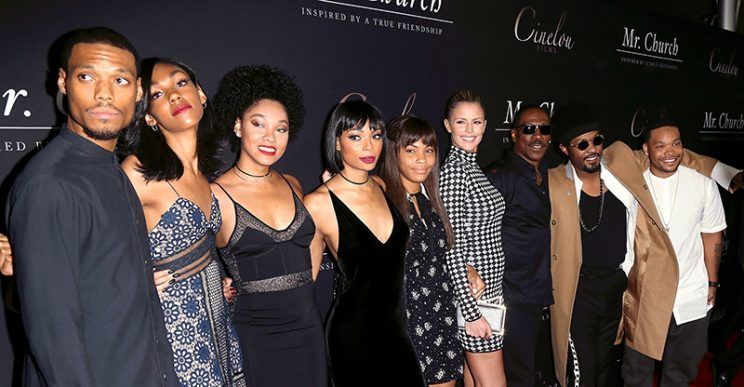

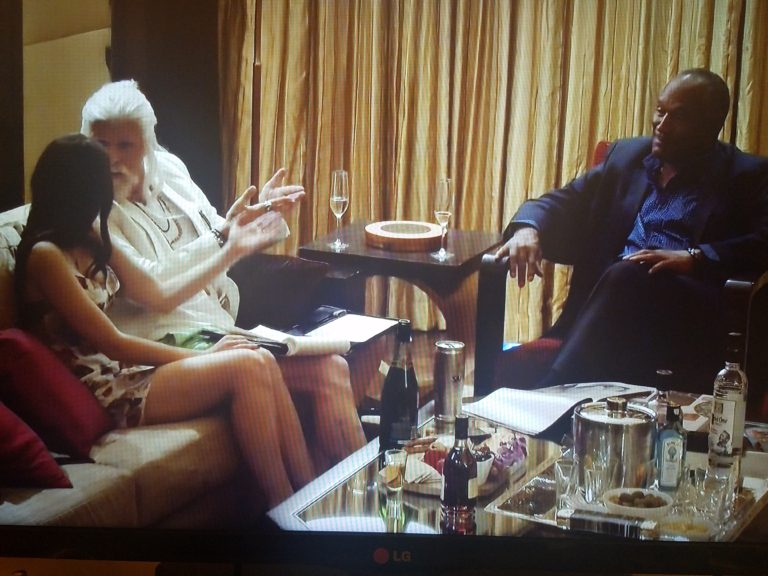
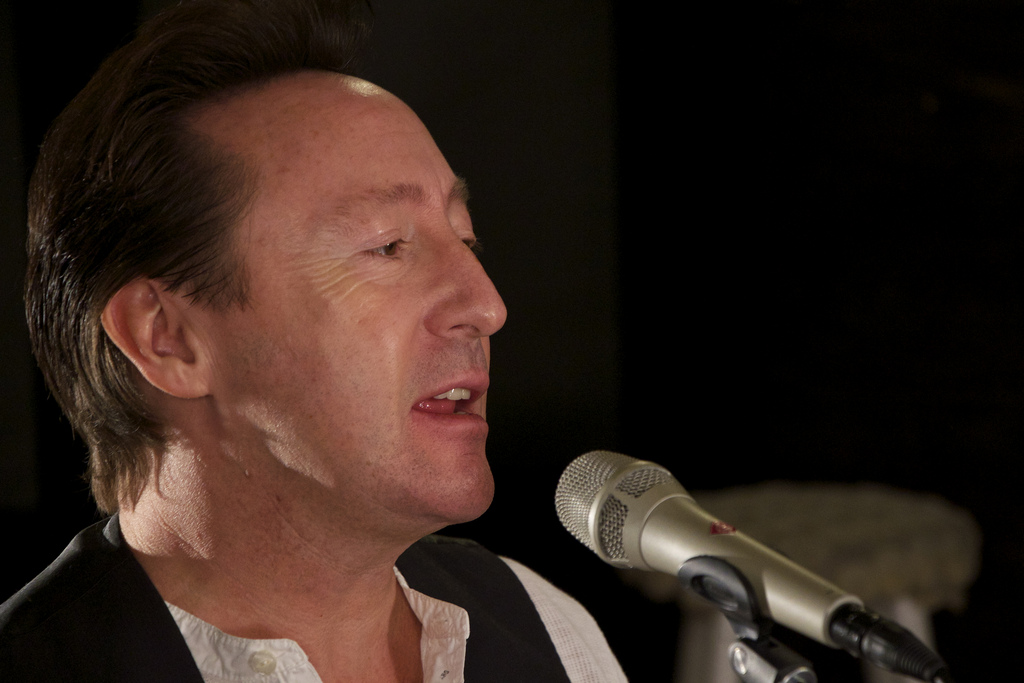
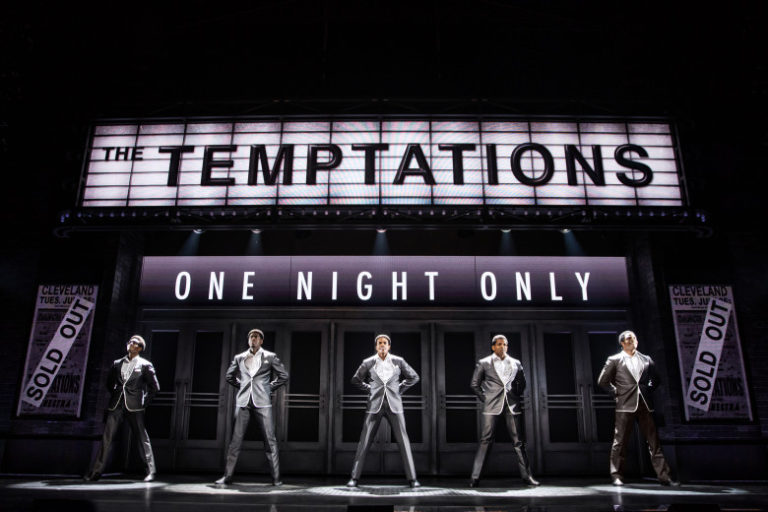
 The Temptations, the iconic Motown band, took center stage literally last night at the opening of “Ain’t Too Proud: The Life and Times of The Temptations,” at the Ahmanson Theater in LA. Considered the greatest R & B band of all time, this dazzling, endearing and affecting musical tells the story of the famed band, there have been 24 band members through the years.
The Temptations, the iconic Motown band, took center stage literally last night at the opening of “Ain’t Too Proud: The Life and Times of The Temptations,” at the Ahmanson Theater in LA. Considered the greatest R & B band of all time, this dazzling, endearing and affecting musical tells the story of the famed band, there have been 24 band members through the years.